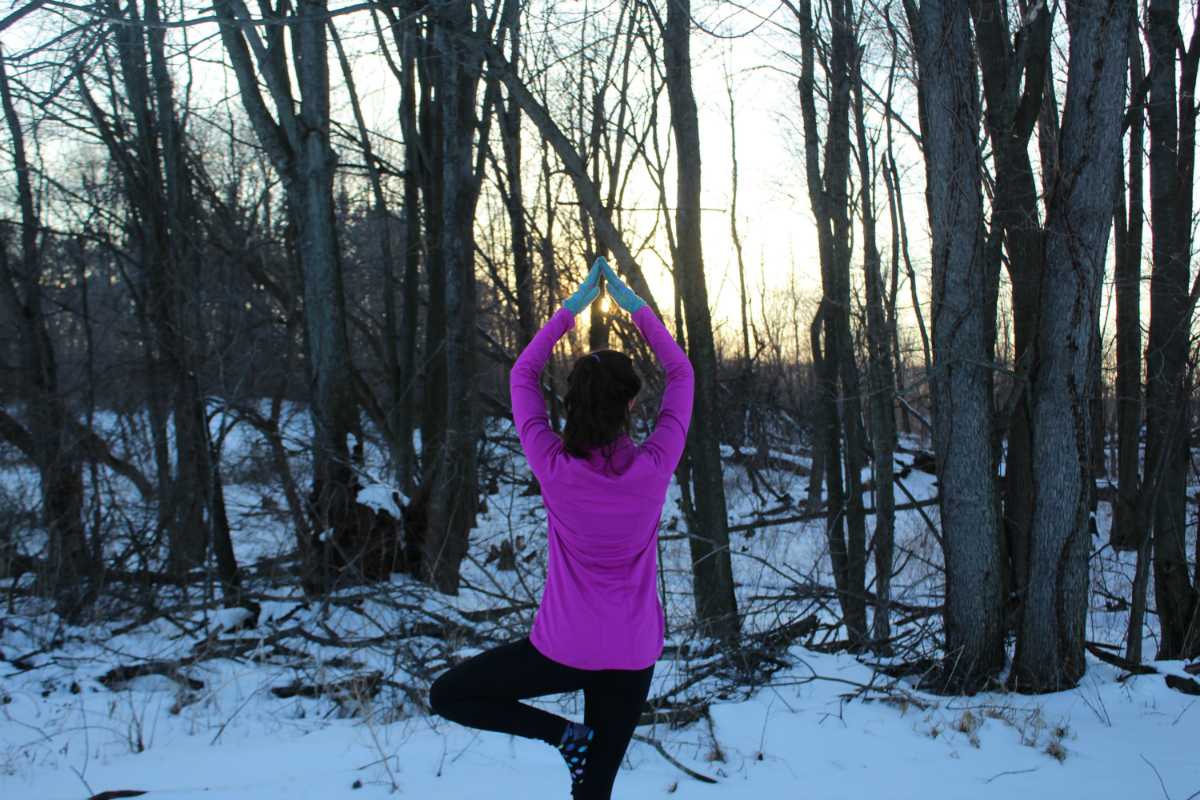Mind, body, balance and scientific soundness
Research and studies back benefits of practicing meditation
March 18, 2016
Perform a Google Image search for “meditation” and witness a sea of surreal pictures of shadowy figures or mysterious monks, legs crossed and hands performing one of many mudras, in some far away monastery or tranquil location in nature. For many, meditation is a spiritual ritual where one connects with himself and nature, clearing the mind and entering a state of solidity and peace. And while some chalk this feeling up to a placebo effect, scientists have been hard at work trying to discover why so many experience a soothing effect from this enigmatic practice.
While the scientific interest and researching of meditation is fairly new, the tradition has maintained its place in human society for thousands of years.
There is no exact point in time where the first use of meditation can be observed, but scientists and anthropologists believe the practice could have been used as early as 3000 B.C. by primitive hunter-gatherers. However, meditation became more widely known and used as a component in major religions, such as Hinduism and Buddhism.
Buddhists were encouraged to practice smrti, or mindfulness. Smrti involves “developing a full consciousness around you and within you,” according to George Boeree, a retired psychology professor at the University of Shippensburg. It is also the form of meditation used by Buddha himself.
Traditionally, meditation is performed by sitting or standing, with eyes closed. Often times hands are put into symbolic positions called mudras, which can be used for specific focuses, such improving concentration or creativity.
Meditation has long been a spiritual practice in religions like Buddhism, however today many Americans practice it for health benefits.
According to a 2012 survey by the National Center for Complementary and Integrative Health (NCCIH), 8 percent of Americans, roughly 18 million, used one of the common forms of meditation as a mind and body practice. Thus, there have been many studies regarding the effectiveness of meditation for various health conditions.
A study conducted by Harvard University researchers at Massachusetts General Hospital concluded that meditation physically affects the brain. In the study, 16 participants had magnetic resonance images (MRI) taken of their brain structures before and after an eight-week mindfulness meditation program. The images showed increased gray-matter density in the hippocampus, the region of the brain that plays an important role in learning and memory, as well as other structures associated with self-awareness. Gray-matter is a tissue responsible for processing information within the brain. This increase in gray-matter contributes to the reported feelings of peacefulness after meditation.
The study also showed increased gray-matter in the amygdala, a structure associated with stress and anxiety, which supports the reduced stress noted by the participants after the program.
According to another study performed by Norwegian researchers, “present results support the notion that nondirective meditation, which permits mind wandering, involves more extensive activation of brain areas associated with episodic memories and emotional processing, than during concentrative practicing or regular rest.” This means that during nondirective meditation, or meditation about letting the mind wander, the areas of the brain associated with processing emotions and memories are more active than they would be not meditating at all.
Meditation does not simply impact the brain. It can even produce interesting results in the body, including cardiovascular effects.
In 2012, researchers from the American Heart Association (AHA) conducted an experiment in which 201 participants with heart disease were asked to participate in twice-a-day transcendental meditation. By the end of the study, the AHA reported that participants were 48 percent less likely to have a heart attack or a stroke while engaging in meditation. According to a press release from the AHA, the data also showed that “blood pressure was reduced by 5 mmHg and anger decreased significantly among transcendental meditation participants compared to controls.”
Scientists are continuing to research even more health conditions that meditation may be able to impact.
The NCCIH funded a study in 2009 in which university students practiced transcendental meditation. The results suggest that performing transcendental meditation “may lower the blood pressure of people at increased risk of developing high blood pressure,” according to the NCCIH.
Meditation has also been linked to getting better sleep, according to a Harvard University experiment.
The research paper published after the study stated, “formalized mindfulness-based interventions have clinical importance by possibly serving to remediate sleep problems among older adults in the short term, and this effect appears to carry over into reducing sleep-related daytime impairment that has implications for quality of life.”
Other areas of research involving meditation’s effect on attention deficit hyperactivity disorder (ADHD), irritable bowel syndrome, smoke cessation and more are still being performed and studied.
Countless hours are dedicated to the research of meditation. The effects on both the mind and body drive further scientific intrigue and inquiry. In fact, there is a whole website specifically for that purpose.
MeditaionResearch.org is put together by Peter Malinowski, a senior lecturer in pyschology and coginitive nueroscience at Liverpool John Moores University and an experienced meditator for 25 years. The site details his thoughts on current meditation research and reports new research carried out in the field.
English teacher Alaina Feliks uses meditation herself.
“I feel like your mind and body and are so connected,” Feliks said. “Our health is so interconnected to the mind. So much of your stress is held in your body, and when you release it you release not only the physical release but the emotional and psychological release too.”

